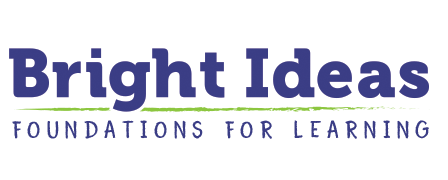Online Resources
Online Games for Kids
Sprout: Games, recipes, craft ideas and more for preschoolers and their families to share together.
Family Websites
Rhode Island Early Learning Standards: Nationally, as part of the education reform effort, states and community leaders are encouraged to consult with local educators, families and community members to develop statewide standards, goals and expectations for what preschool children should know and be able to do.
Disney Family: Answers to everyday family life including recipes, entertainment, parenting, coupons, and travel.
Disney Family Fun Magazine Online: Recipes, crafts, printables and other ideas for family fun for kids and parents.
Amazing Moms: Birthday party ideas, easy craft projects, family fun activities, recipes and more from real moms.
Parenting Websites
Families Online Magazine: Parenting help and advice, child development ages and stages, activities to do with kids and recipes kids will enjoy.
Hand In Hand: Parent resources for helping crying infants sleep, managing toddlers tantrums, fostering adolescent success, building emotionally intelligent lifelong relationships, and more.
Activities and Skills
Literacy should be an integral part of child development. The following types of activities are especially productive for enhancing young children’s reading and writing development.
Storybook Reading
Getting children to interact with books should be the key way in which children experience print. This interaction includes parents reading aloud to children as well as the children “reading” independently. Children’s favorite books should be read again and again. These repeated readings will encourage in-depth exploration of books by the children.
Tips for reading aloud to young children:
- Preview the book
- Introduce the book
- Read with expression
- Engage children in discussion about what is being read
- Ask open-ended questions
- Review what has been read
Types of books to include in a home library for young children:
- Wordless books
- Predictable books
- Repetitive text boos
- Picture storybooks
- Big books
- Participation books
- Poetry collections
- Concept books
- Non-fiction books
- Alphabet and counting books
- Easy reader books
- Finger-plays books
- A dictionary
These stages represent a general outline of writing development in children. Stages often overlap and children progress at varying paces. Writing skills development can be enhanced through regular writing practice, whether it consists of scribbling, invented spelling, or conventional spelling.
- Scribbles for enjoyment
- Scribbles with the intent to convey a message
- Uses drawings to convey message or story
- Dictates words to be written
- Attempts to write letters or sounds
- Uses knowledge of letters and/or sounds to create words
- Matches sound with letter
- Recognizes difference between invented spelling and conventional spelling
- Correct directional patterns in written work
- Includes spaces between words
- Uses a correct pencil grasp
Below is some helpful language for parents to use when talking to children about their artwork.
- What would you like to tell me about your painting?
- What part did you like best?
- You’ve used many colors.
- Did you enjoy making this?
- The yellow looks so bright next to the purple!
- You made a new color at the easel. How did you do it?
- How did you get that sculpture to stay up?
- You have been working hard. Tell me about what you are doing.
- You were very careful about where you pasted those feathers.
- You made some lines going up and down and some going back and forth.
- Did your hands go round and round to make those circles?
When talking with children about their artwork, avoid the following:
- Using general words such as pretty, great or lovely.
- Telling children what you think their work represents.
- Asking children, “What is it?” Instead, say “Tell me about your picture.”
- Avoid telling children where the eyes, nose, etc. should be glued. The child should do all the work, regardless of age or developmental level.
Soap Clay
Mix ¾ cup of mild soap with 1 tablespoon warm water. Form clay into figures and objects. Let dry to a hard finish and paint.
Silly Putty
Mix 2 parts white glue and 1 part liquid starch.
Alphabet Bag
Fill a zip lock bag with finger paint. Practice numbers and letters by writing on the outside of the bag.
Cool Kazoo
Wrap a cardboard tube in gift wrap or paper to be decorated. Place wax paper over one end of the tube and secure it with a rubber band. Hum through the open end of the kazoo.



